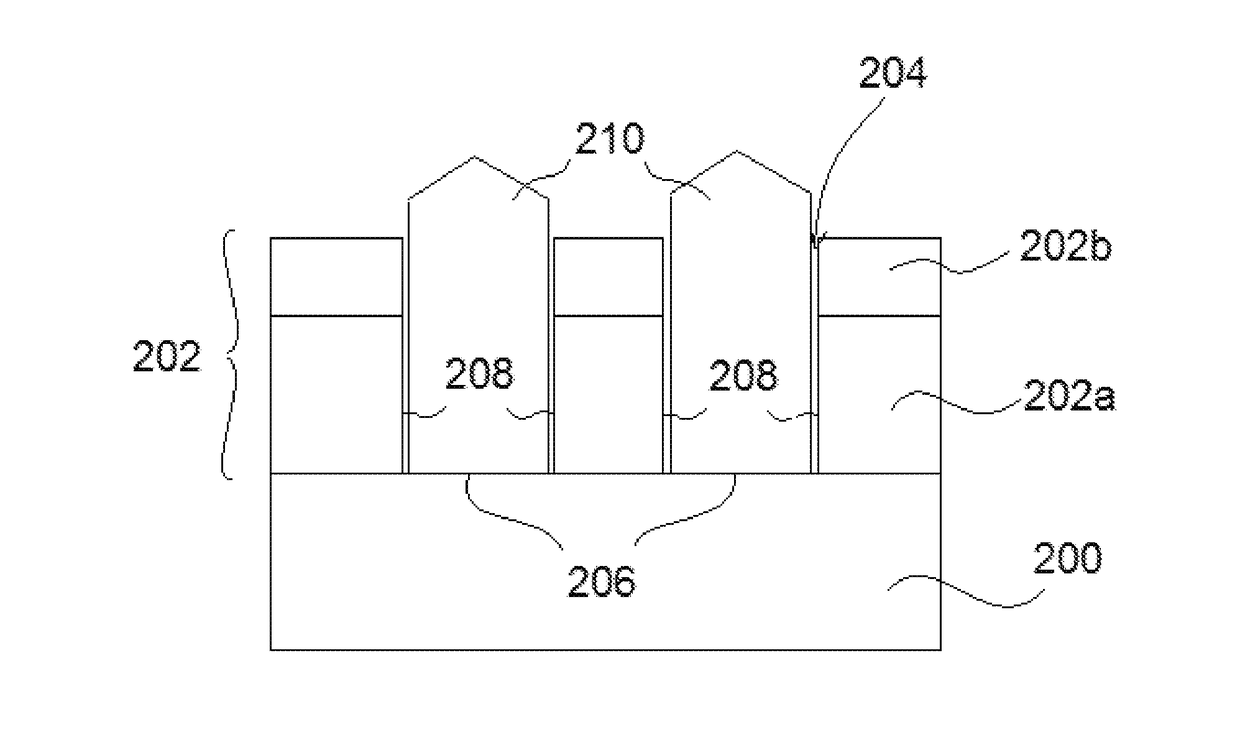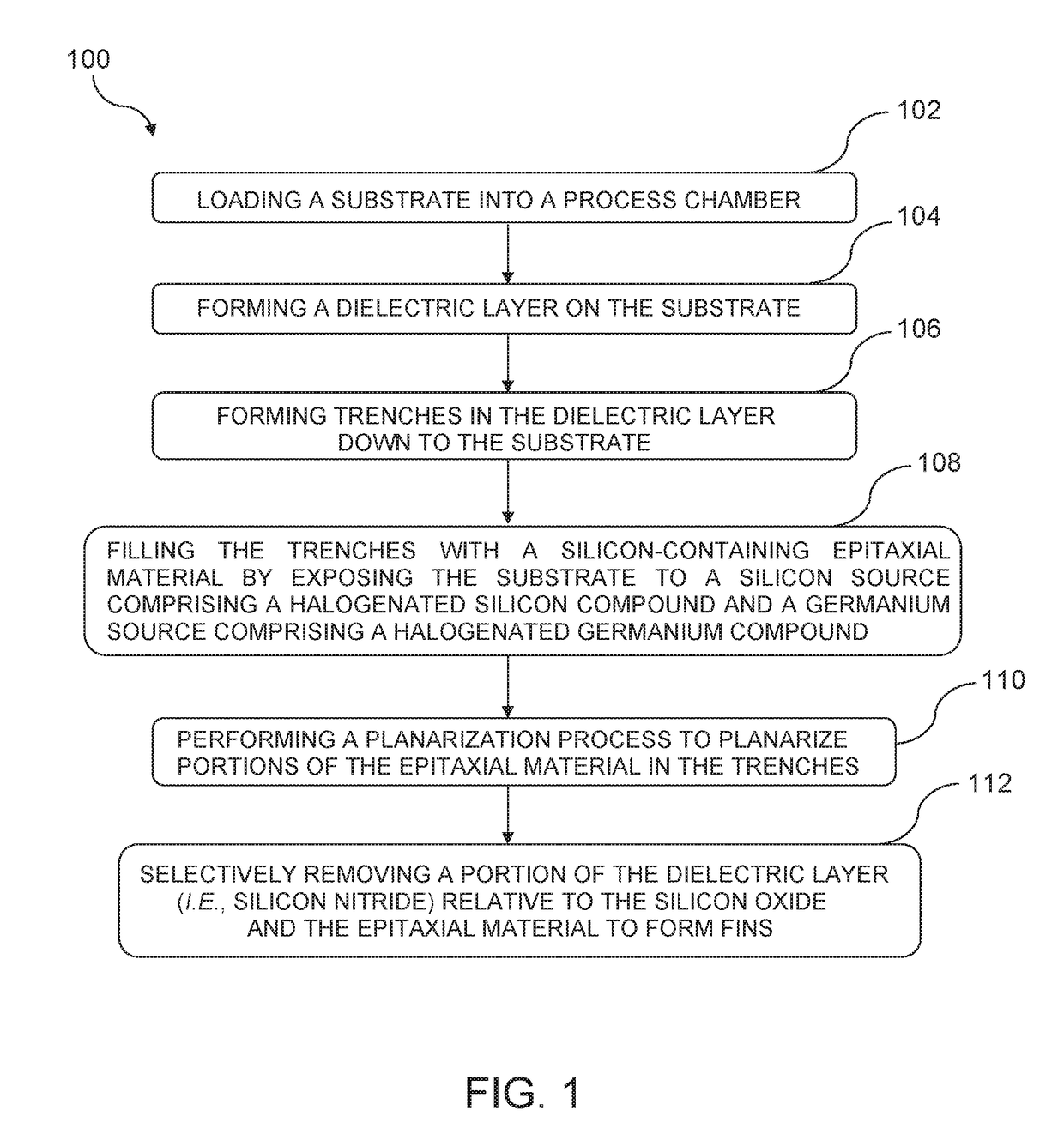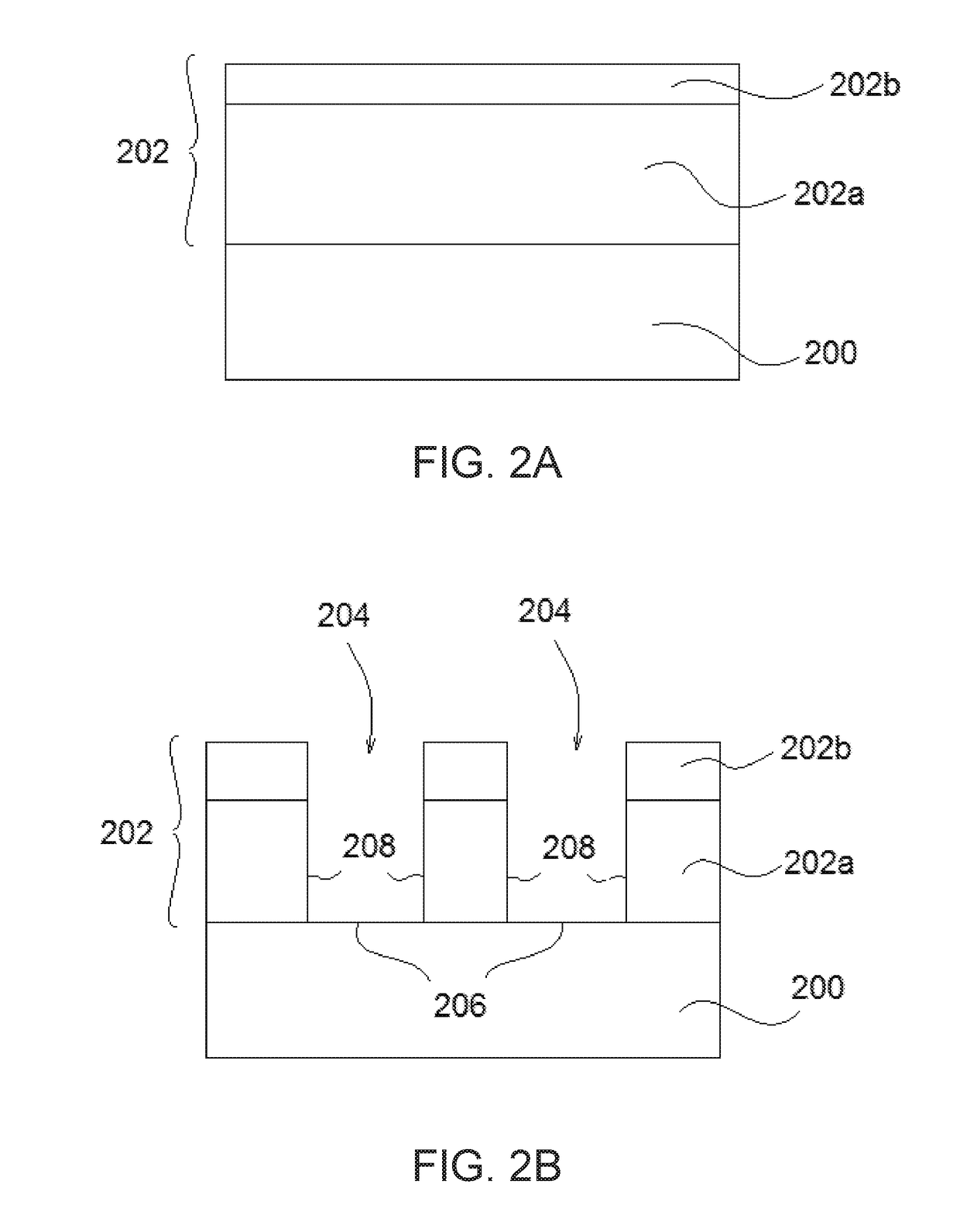Method of selective epitaxy
a selective epitaxy and film technology, applied in the direction of semiconductor devices, basic electric elements, electrical equipment, etc., can solve the problems of poor electrical properties, high defect concentration, and difficult epitaxial growth
- Summary
- Abstract
- Description
- Claims
- Application Information
AI Technical Summary
Problems solved by technology
Method used
Image
Examples
Embodiment Construction
[0013]Embodiments of the present disclosure provide methods for manufacturing semiconductor devices such as transistors used for amplifying or switching electronic signals. For example, the disclosed methods may be utilized in the manufacture of CMOS (Complementary Metal-Oxide-Semiconductor) transistors. While embodiments described in this disclosure use a general term “integrated circuit” as an example, it should be understood that these embodiments are equally applicable to any integrated circuit technologies such as bipolar, N-type or P-type metal oxide semiconductor (NMOS or PMOS), or CMOS etc. Particularly, embodiments of the present disclosure can benefit processes of fabricating NMOS / PMOS inverters or gates, CMOS inverters or gates, any integral circuit devices incorporating a gate structure, or any integral circuit devices having transistors (2D or 3D) or multiple gate structures.
[0014]FIG. 1 depicts a flow chart illustrating an exemplary method 100 for manufacturing an inte...
PUM
| Property | Measurement | Unit |
|---|---|---|
| temperature | aaaaa | aaaaa |
| temperature | aaaaa | aaaaa |
| width | aaaaa | aaaaa |
Abstract
Description
Claims
Application Information
 Login to View More
Login to View More - R&D
- Intellectual Property
- Life Sciences
- Materials
- Tech Scout
- Unparalleled Data Quality
- Higher Quality Content
- 60% Fewer Hallucinations
Browse by: Latest US Patents, China's latest patents, Technical Efficacy Thesaurus, Application Domain, Technology Topic, Popular Technical Reports.
© 2025 PatSnap. All rights reserved.Legal|Privacy policy|Modern Slavery Act Transparency Statement|Sitemap|About US| Contact US: help@patsnap.com



